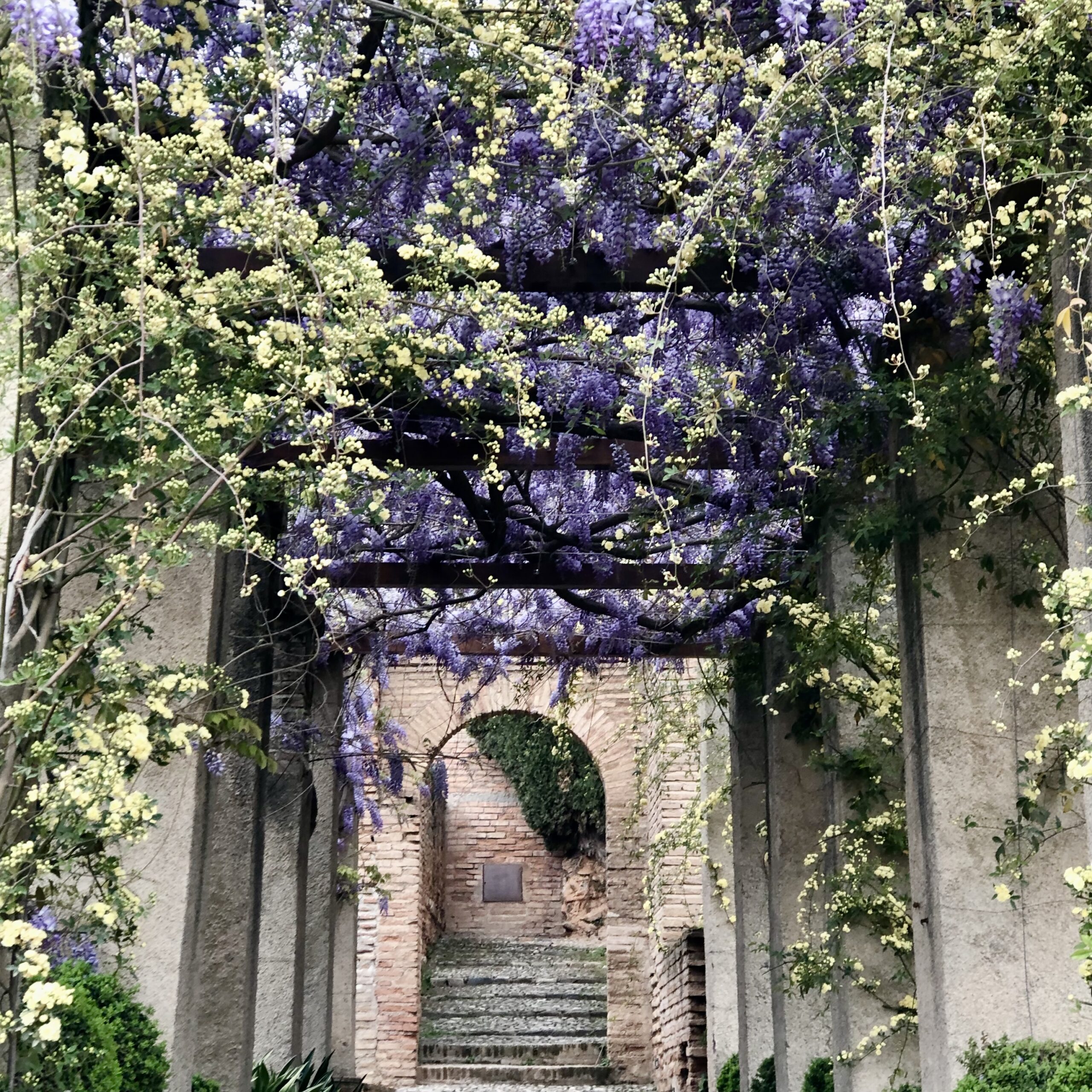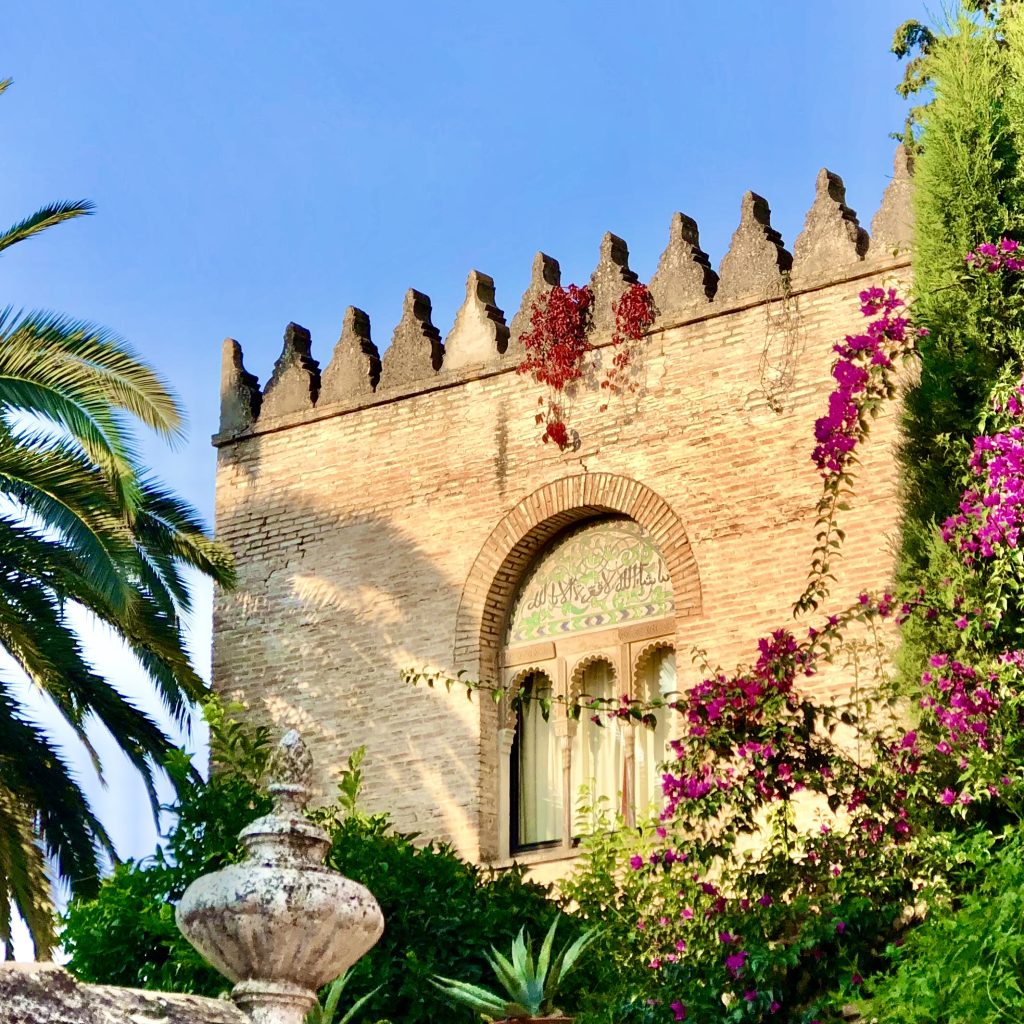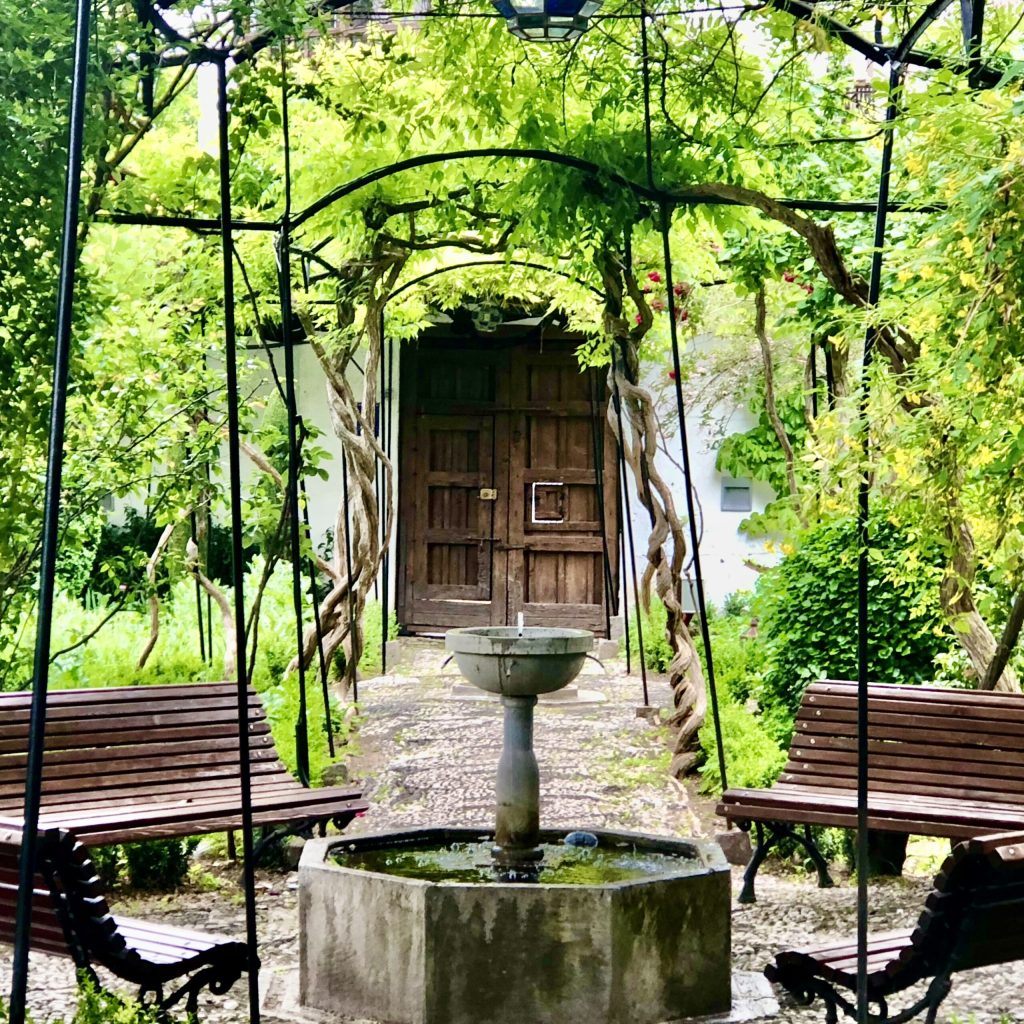
10 May The Gardens from Granada and its origin
The Gardens from Granada and its origin
“I fell in love with this garden where the daisy is the smile, the myrtle, the curls, and the violet, the mole.”
Ibn Jafaya (1058-1138)
Gardens from Granada, as we know them today, date back to ancient Persia.
In his article Spanish-Muslim Gardens, Berthus de Boer, landscape architect, tells us that the art of gardening was one of the most notable contributions of Persian civilisation.
The origin of Persian gardens is estimated to date back to 4000 BC, and they were called Pairi-daeza, the origin of the word Paradise or Garden of Eden.
A proof of this are the garden designs in a cross shape that can be found on pottery from that time, and a good representation still standing today is the Taj Mahal.
In the Islamic culture, as in ancient Persian culture, the idea of a Garden derives from the physical conditions of its location.
Therefore, the scarcity of water, the arid land and the intense heat, are determining factors in creating a garden.
A unique space that is different from its natural surroundings.
The Islamic garden is an oasis, achieved through the supply of water, which is considered to be a superior good and the source of life.
The classical Muslim garden is an intimate and secluded place, surrounded by a tranquil atmosphere.
Although it is an enclosed site, the surrounding landscape can be enjoyed from certain points.
It is a space that allows you to reach a state of communication with God, meditation and recreation of the senses.
Al-Andalus gardens have been greatly influenced by the garden developed in Persia and still nowadays you can enjoy their beauty in Andalusia.
And most particularly in the Gardens from Granada.
Islamic Nazari Gardens in Granada

During the medieval period, the Islamic economy was almost entirely based on agriculture, sugarcane, dried fruits, nuts and silk production.
Not surprisingly, agricultural changes such as irrigation and the cultivation of several crops per year was a real revolution and had a significant impact on Al-Andalus.
These changes led to a new habitation of the landscape, with implications for garden design.
Medieval gardens from Granada, which were created during the Nasrid period, are the most well-known and of utmost relevance.
This is largely due to their antiquity and the mastery the muslims achieved in the handling of vegetation, the use of water and the incorporation of the building.
Every garden element is used in a virtuous way, aiming to awaken the visitor’s senses.
Hence the significance of the garden.
A place that can recreate the yearned-for Koranic paradise on earth.
The islamic Nazari Gardens from Granada were places where business, pleasure, science and art mixed perfectly together.
Nowadays, in the most emblematic spots of Granada, such as the Albaicín, or near the Alhambra, we can find the “Cármenes Granadinos”.
These enchanting gardens-orchards are the legacy of the ancient Nasrid culture.
And, to this day, they continue to delight us with their natural beauty.
Cármenes granadinos, what are they and where can be founded

Gardens from Granada are “closed paradises for many, open gardens for few”, said the poet Soto Rojas.
El Carmen is a typical house in Granada with an adjoining green space, garden and orchard at the same time, which is an extension of the house.
They also serve for growing vines, hence their name: Carmen, from the Arabic word Karm, which means vineyard.
Delimited by a wall linked to the main house, they are normally set up on terraces with fantastic views to Granada and Sierra Nevada.
In these pleasant spaces, the delightful scents of flowers such as roses, jasmine, lavender and myrtles awaken the senses.
While the shade of pomegranate, pear, oranges and apple trees offers a welcome refuge during the Andalusian summer.
Many of these stunning gardens from Granada are private, but some others are open to the public and can be visited.
The Carmen de los Mártires
Called it Campo de Ahabul by the muslims and Campo de los Cautivos for the christians, in commemoration of the Christian martyrs who suffered martyrdom during the Arab domination.
Seven hectares of orchards and a perfectly harmonized blend of Spanish, English and French garden styles frame a charming palace with an impressive Nasrid courtyard.
The Carmen del Aljibe del Rey
Located in the Albaicín quarter.
The main building is flanked by the typical orchards, along with gardens and small edifices, all of which are distributed across 0.2 hectares.
A large interior courtyard is located above the cistern, which is the largest of all the Muslim cisterns in Granada, dating back the 11th century and capable of storing 300 metres cubic of water.
And is well worth a visit.
The Carmen de la Victoria
The Carmen de la Victoria , also called Carmen Olivarillo, is located on a privileged site.
In the late 19th century it was attached to Carmen Percal, on the sides of Cuesta del Chapiz’s ancient and disappeared Arab wall..
It is a magnificent place to visit and to admire stunning views of the Alhambra.
And, of all the beautiful gardens from Granada, the Generalife, in the Alhambra, is by far the most impressive of them all for its magnificence and breathtaking beauty.
Generalife Palace, the most exalted of gardens

Built between the 13th and 14th centuries, The Generalife is a palace which was used by the Muslim kings as a resting place.
Known throughout history as “Garden” or “Zambrero´s orchard”, “The most exalted of the Gardens” or “Craft and leisure house”, to “Mansion of enjoyment or great amusement” and “Citarist’s Garden”.
Today it is widely accepted to refer to Alarife’s Garden or Gardens, i.e. the Architect’s garden.
Hence the Allah´s garden or Paradise.
It was an ideal estate for both agriculture and relaxation, conceived as a country villa, with ornamental gardens, orchards, courtyards and buildings integrated into the landscape of the Alhambra.
Irrigation engineering in Al-Andalus made possible the construction of the palaces of the Generalife and the Alhambra.
An authentic urban system that integrates architecture and landscape, extending its influence to the surroundings with gardens and unique hydraulic infrastructures.
Consequently, the Generalife Garden and its orchards are one of the few productive agricultural spaces that have been preserved since the Middle Ages.
With a central area of residential facilities and a vast expanse of cropland divided into plots by four big orchards to take advantage of its terraced hilly landscape.
From where you can enjoy spectacular views of the Monumental complex.
Generalife`s history
After the conquest in 1492, the Catholic Monarchs granted the estate to a warden for its custody and use.
Later on, from 1631 onwards, passed in perpetuity to the Granada-Venegas family.
Finally, in 1921, after a long lawsuit, the Generalife became the property of the State.
Since its Nasrid origin, time has multiplied and enriched the diversity of gardens from Granada and vegetation that can be found today, creating an authentical garden treasure.
The gardens of the Generalife and Alhambra have been included in the European Itinerary of Historic Gardens, and Unesco World Heritage since 1984.
If you ever wonder what the “Garden of Eden” was like, you must visit Granada and its wonderful gardens.
Let your senses be immersed in the beauty of the flowers, the fragrance of the fruit trees and the breathtaking scenery.
And to make the most out of your trip I highly recommend you to have a private tour with a professional tourist guide.
Contact me to discover the best gardens in Granada!



Sorry, the comment form is closed at this time.